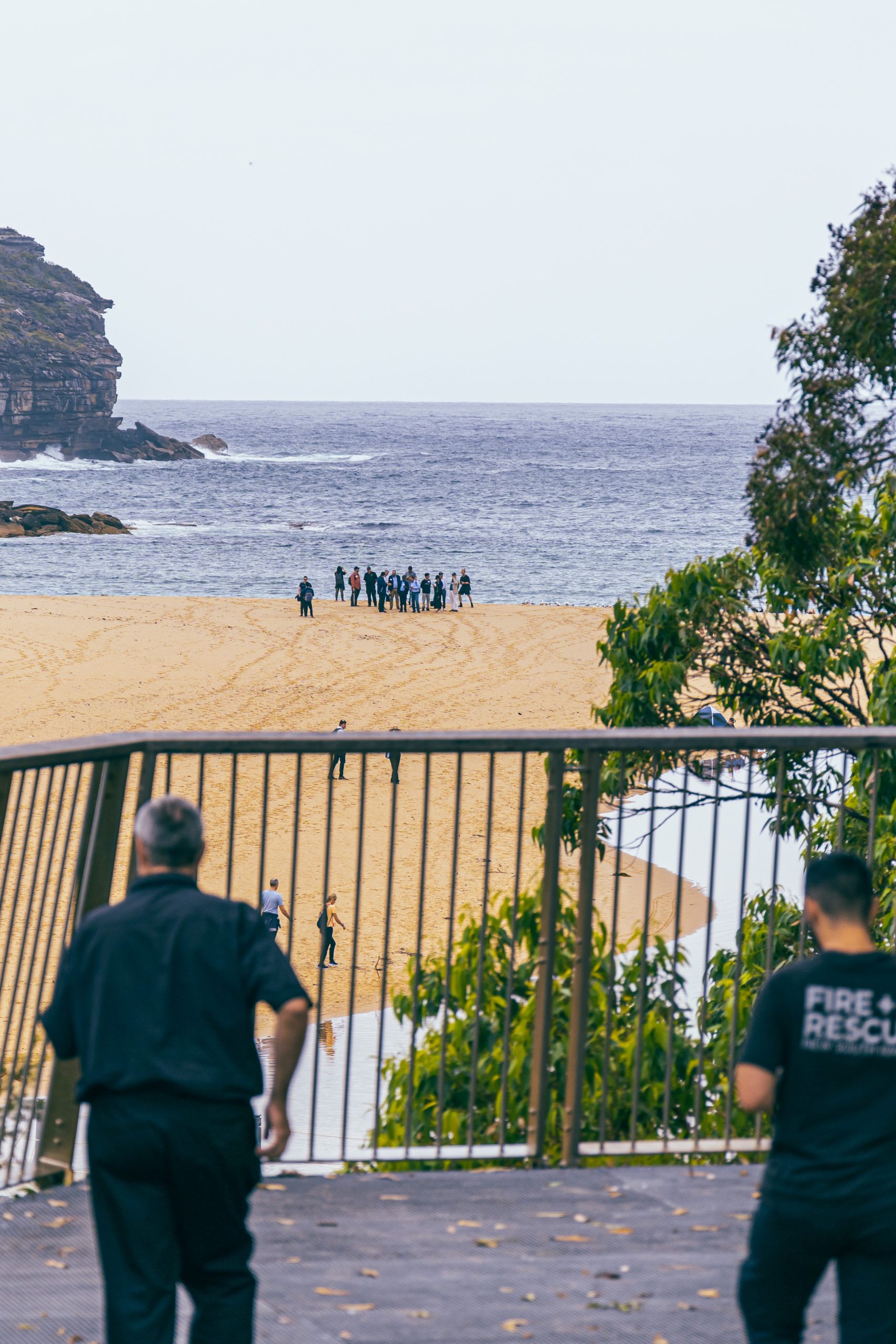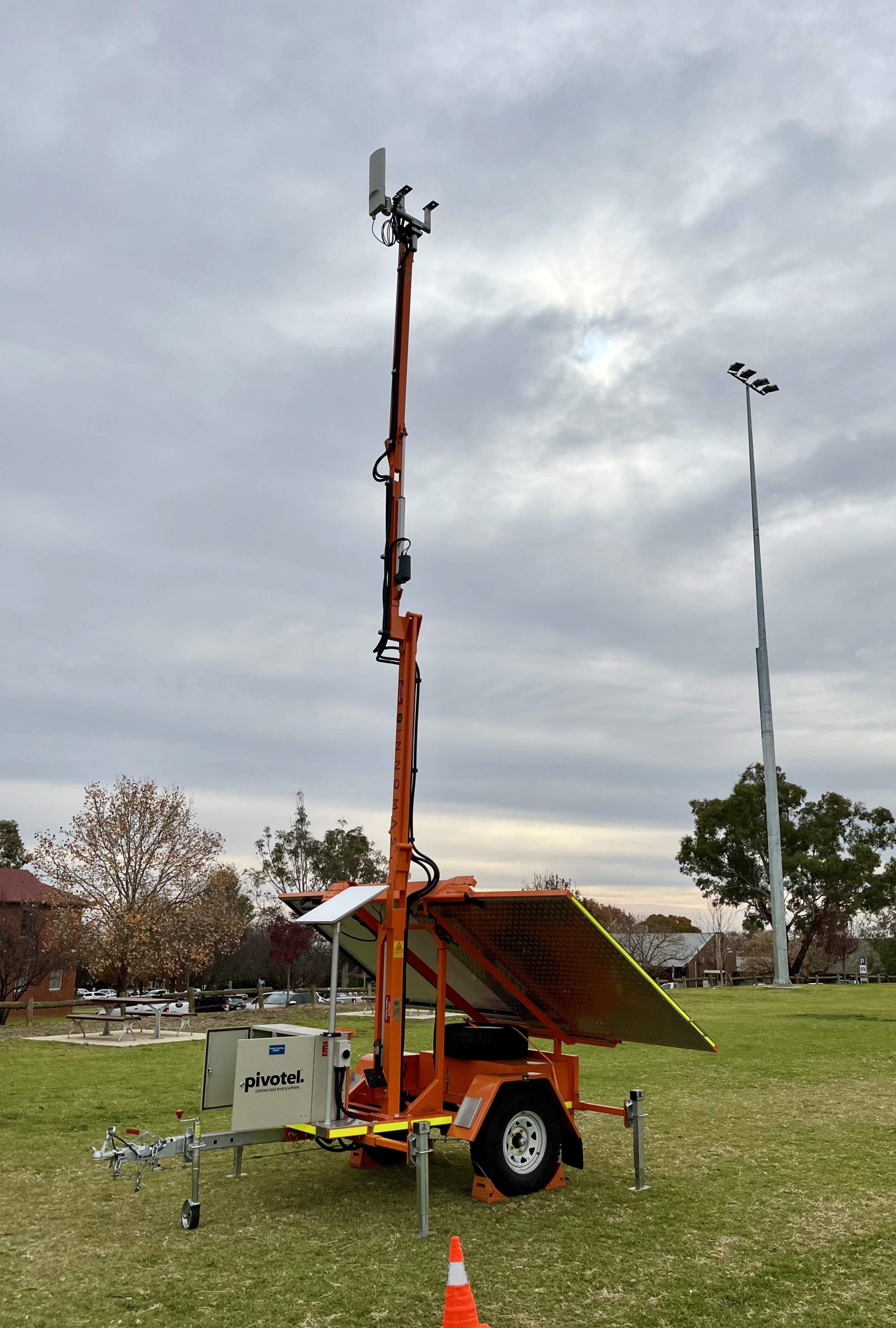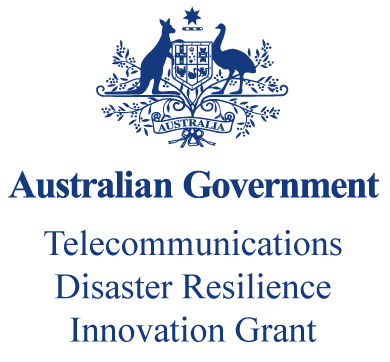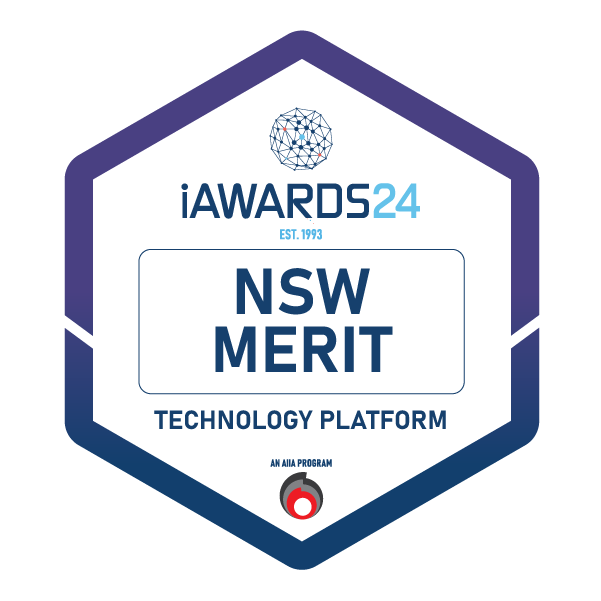Rapidly Deployable Large Area Wi-Fi System (LAWIFI)
The Connectivity Innovation Network’s Large Area Wi-Fi System (LAWIFI) is a cutting-edge initiative designed to revolutionise long-range and large-area Wi-Fi systems, particularly for disaster recovery and remote environments. This project aims to deliver reliable, high-speed Wi-Fi coverage in areas where cellular networks are lost due to natural disasters or where no existing connectivity infrastructure is available, particularly in regional and remote parts of Australia.
This 12 month pilot project was successfully delivered and demonstrated on the 27th of February 2024 at Wattamolla Beach, Royal National Park.
The Problem: Communication Failures in Critical Situations
Natural disasters often compromise traditional communication networks, delaying rescue efforts and access to essential services. Additionally, many remote communities face persistent challenges in accessing reliable internet, impacting critical services such as healthcare, education, and local businesses.
Market Gaps: Insufficient Coverage and Deployment
Current communication technologies face limitations such as:
- Limited range: Traditional Wi-Fi networks lack the ability to cover large areas.
- Rapid deployment: There’s a shortage of quick-to-deploy communication solutions for emergencies.
- High infrastructure costs: Many existing solutions are expensive and complex to maintain.
- Mesh network limitations: Mesh networks have logistical challenges and reduced reliability over larger areas.
- WiFi Halow limitations: While popular for IoT, WiFi Halow is incompatible with standard mobile devices, operating on a sub-1Ghz frequency, whereas most devices operate on 2.4Ghz and 5Ghz.
The Solution: Large Area WiFi (LAWIFI)
The LAWIFI system addresses these gaps by deploying advanced antenna and Wi-Fi technology capable of covering areas up to 2×2 km with high-speed broadband. It provides a scalable, cost-effective, and rapidly deployable solution for both disaster zones and underserved regions.
Key features include:
- Novel Antenna Design: A wide beam, high-gain antenna extends coverage over large areas without compromising signal strength.
- Patented Wi-Fi Protocols: These solve the “hidden node” problem, enabling longer transmissions with minimal interference.
- Flexible Satellite Backhaul: Using SD-WAN architecture and various satellite providers (OneWeb, NBN, Starlink), the system ensures reliable connectivity even with heavy user traffic.
- Portable Power Supply: Guarantees independent power, ensuring functionality in areas with limited infrastructure.
Applications
- Disaster Recovery: Providing critical communication for emergency responders during natural disasters.
- Remote Area Connectivity: Supporting underserved communities with access to services such as healthcare and education.
- Temporary Events: Offering rapid deployment for public events and large gatherings.
Next steps
The project is now in its second phase, focusing on integrating antenna and access point technologies. The next steps involve validating and benchmarking the upgraded system to ensure scalability and robustness for deployment in varied scenarios.
To ensure you don’t miss out on our continuing progress, don’t forget to subscribe to our mailing list and follow us on LinkedIn.
Project duration:
12 months
Project status:
Complete
Project leaders:
Professor Yonghui Li – University of Sydney
Associate Professor Peiyuan Qin – University of Technology Sydney
Industry collaborators:
Pivotel Satellite
NBN Co.
OneWeb
Real Access



Grants and Awards
July 2024
Connectivity Innovation Network, Pivotel and Roobuck awarded federal TDRI grant to further develop Rapidly Deployable Large Area Wi-Fi solution

July 2024
Large Area Wi-Fi system awarded with prestigious NSW iAwards 2024 merit recipient recognition

Frequently Asked Questions (FAQ)
The Rapidly Deployable Large Area Wi-Fi (LAWiFi) project is an initiative led by the Connectivity Innovation Network (CIN), in collaboration with the University of Sydney, the University of Technology Sydney (UTS), and industry partners. The project aims to develop a cost-effective, rapidly deployable Wi-Fi system capable of providing high-speed internet coverage over large geographical areas, particularly in remote regions and during emergency situations.
Traditional communication networks often fail during natural disasters or are non-existent in remote areas, hindering access to essential services. The LAWiFi project addresses this gap by creating a solution that ensures reliable connectivity in such challenging environments, facilitating communication for emergency responders and local communities.
The LAWIFI system utilizes advanced antenna technology and patented Wi-Fi protocols to extend internet coverage up to 2×2 kilometers. It integrates with satellite backhaul services from providers like OneWeb and NBN Co., ensuring stable and high-speed connectivity even in areas lacking traditional infrastructure.
The system is designed for rapid deployment in disaster-stricken areas to restore communication networks quickly. Additionally, it serves remote communities by providing access to essential services such as healthcare, education, and business operations, thereby bridging the digital divide.
LAWIFI offers several advantages over conventional Wi-Fi systems. It can be rapidly deployed in difficult or remote environments with minimal setup. The system provides wide-area coverage (up to 2×2 km), supports stable and high-speed connectivity, and is significantly more cost-effective due to its minimal infrastructure requirements. These features make it ideal for versatile applications across emergency response, remote education, telehealth, and community access initiatives.
Yes, the system has undergone successful demonstrations, including a final demonstration at Wattamolla Beach in the Royal National Park, Sydney and a live deployment during Navshield 2024 in Ghin-Doo-Ee National Park. These tests showcased its capability to provide stable, high-speed internet coverage in challenging environments.
- Connectivity Innovation Network (CIN): The initial pilot phase received funding from CIN, a collaborative initiative jointly led by the University of Technology Sydney and the University of Sydney, aimed at advancing telecommunications innovation.
- NSW Government: In November 2022, the NSW Government provided $500,000 in funding to support the development of the LAWIFI system.
- Federal Government’s Telecommunications Disaster Resilience Innovation (TDRI) Program: In July 2024, CIN, in collaboration with Pivotel and Roobuck, was awarded a federal grant under the TDRI program to further develop the LAWIFI solution.
The project aims to transition from pilot demonstrations to widespread deployment, particularly in disaster-prone and remote regions. Ongoing collaborations with industry partners and government agencies are focused on refining the technology and expanding its applications to enhance connectivity across Australia.
The system features a novel antenna design with a wide beam and high gain, enabling coverage of up to 2×2 kilometers. It employs patented Wi-Fi protocols to address issues like the “hidden node” problem, ensuring efficient data transmission. The system supports up to 100 users with data rates of approximately 10 Mbps per user. See further FAQs below with regard to power consumption, data sheet and throughput.
LAWIFI integrates with satellite backhaul services, including those from OneWeb and NBN Co., using SD-WAN architecture. This setup allows for reliable internet connectivity even in the absence of traditional communication infrastructure.
Yes, the system is designed to be compatible with current emergency response protocols. Its rapid deployment capability and extended coverage make it a valuable tool for emergency services during disaster response operations.
The modular design of the LAWIFI system allows for scalability. Multiple units can be deployed to cover larger areas or to support more users, making it adaptable to various operational requirements.
There are no specific requirements for the system to run with a backhaul; the LAWiFi system can operate flexibly with various backhaul options. However, the available backhaul data rate will influence the overall system performance. If a higher Wi-Fi data rate or throughput is desired, a high-data-rate satellite backhaul would be required to support that level of connectivity.
Yes. The LAWIFI system is designed for rapid deployment and ease of use, with minimal setup required. While not fully “plug and play” in the consumer electronics sense, the system can be operational within minutes once on site. A key focus of the project was reducing technical barriers in the field, allowing first responders or trained personnel to deploy the system without needing in-depth networking expertise.
The LAWIFI unit is designed with low-power operation in mind, suitable for off-grid deployment. The system is compatible with a variety of mobile power sources, including solar and generator setups, via the versatile Power over Ethernet (PoE). During field tests, the system has operated on portable battery power, with a maximum power consumption of around 50W when running on a full load. If not in a full load scenario, the power consumption will be much lower. The system’s low consumption makes it viable for remote or emergency environments where power is limited.
The system has currently been developed and tested in limited quantities, with an estimated cost of around $15,000 per unit for full 360-degree Wi-Fi coverage. This price is expected to decrease significantly with large-scale production and commercial deployment.
The project team is currently developing an integrated version of the system as part of Phase 2. A detailed datasheet and product description will be made available once testing in this phase is complete.
Throughput performance during the LAWIFI final demonstration varied based on user location and environmental conditions, particularly the degree of line-of-sight (LoS) between the device and access points. In optimal, clear LoS areas such as open beach environments, the system achieved peak throughput of approximately 80–90 Mbps per user. In partially obstructed (half-shadowed) zones, performance remained strong at 50–60 Mbps, while in fully shadowed areas (e.g., behind dense vegetation or terrain), throughput ranged between 10–20 Mbps. These results demonstrate the system’s ability to maintain meaningful connectivity even in challenging propagation environments.
Transmit power for 2.4GHz is 20dbm and antenna gain is 15dbi. For 5GHz, the power is 19dbm and antenna gain is 17dbi.
To stay updated on this exciting project, subscribe to our mailing list and follow us on LinkedIn.
For enquiries:
- Media Enquiries: communications@connectivityinnovationnetwork.com
- General Enquiries: admin@connectivityinnovationnetwork.com
Find out more
To stay updated on this exciting project, subscribe to our mailing list and follow us on LinkedIn.
For enquiries:
- Media Enquiries: communications@connectivityinnovationnetwork.com
- General Enquiries: admin@connectivityinnovationnetwork.com





